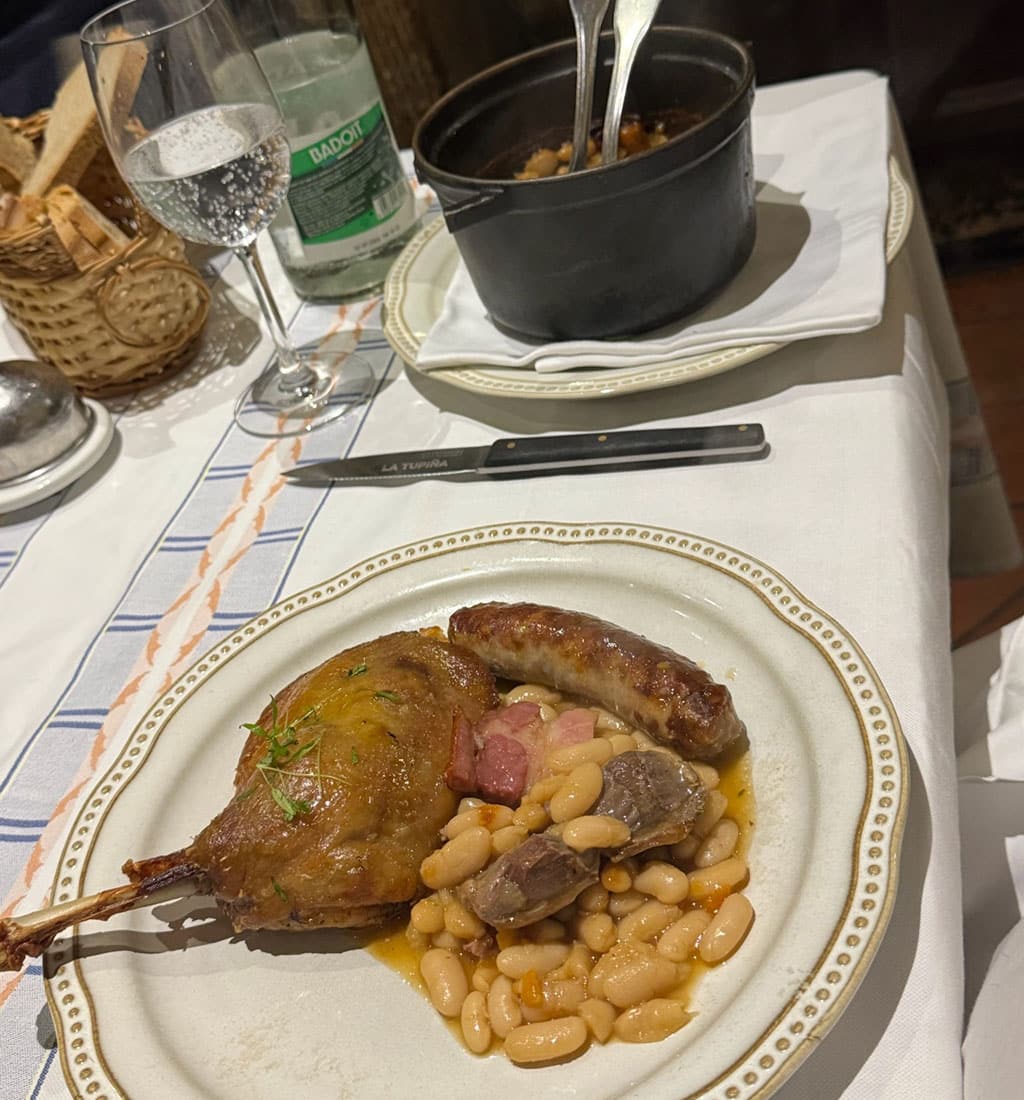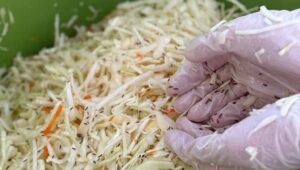“My dream is to die with an oven full of cassoulet” – a phrase once said by Étienne Rousselot, founder of the iconic Hostellerie Etienne, a restaurant dedicated to cassoulet tradition. And indeed, this humble bean stew from the south west of France carries a larger-than-life culinary legacy that perhaps can only equal red wine and foie gras.
Some say that the roots of the dish go back to the epicurean notes by al-Baghdadi who, circa 1226, spoke of highly refined cuisine that included a recipe for mutton stew with beans. Others suggest that cassoulet was created during the Hundred Years’ War (1337–1453) by the inhabitants of Castelnaudary, who, in attempts to push the English back to the Channel, collected the remainder of their larders and cooked a dish so hearty that it reinvigorated their warriors.
Either story is rather capricious if not for their historical accuracy than for the fact that beans had not made an appearance in Europe until the 16th century.
Perhaps the story of the cassoulet origins will always remain elusive. What we do know for sure is that cassoulet is a slow-cooked dish of white beans and meats, flavoured with garlic and vast amounts of animal fat. With regards to cassoulet, the word ‘slow-cooked’ should not be underestimated.
Cooking cassoulet is at least a three-day affair; that is if the duck legs have already been cooked confit style. This part of the recipe can set you back as far as four more days since it involves curing and then slow-roasting them in the oven.
The first day is usually dedicated to soaking beans and making the rich pork stock. The pig’s trotter is combined with pork rind and ham hock, and slowly simmered with flavourings (onion, carrot, bouquet garni). Bones are discarded, and the meats and the stock are reserved for later.
On the second day, the beans are rinsed and pre-cooked in the said stock for a quick 30 minutes. Beans are then separated from their cooking liquid, and both are set aside to wait for their next appearance. Whilst this is taking place, pork belly is browned in duck fat, creating a delicious foundation for the subsequent sautéing of onions, garlic, beans, and then sausage pieces, which all take turns in bathing in the fat mixture.
Assemble the dish by layering beans, vegetables and meats and slow-cook it with plenty of stock uncovered for about two hours (there is the second act for the stock saved from cooking beans).
Afterwards, the dish is cooled and stored overnight to further develop and fuse the flavours. On the last day, the cassoulet is brought to room temperature and then cooked for another two hours adding more stock to make sure that the dish remains well watered. Cassoulet should never be dry. It is a moist, juicy stew with plenty of liquid that can be delectably collected with a piece of bread.
Traditionally, cassoulet is cooked in a high-sided earthen pot called a ‘cassole’, which coincidentally also gives the name to the dish. Dutch ovens can deliver great results too. However, in this scenario, one needs to be more mindful of temperatures and timings as these ovens cook hotter and faster. Paying attention to the stock evaporation is very important here for the reasons mentioned above.
Considering the time the dish has been around, it is not surprising that the recipe gained several variations. Firstly, the choice of meats can vary. According to the États Généraux de Gastronomie Française (that is the Vatican of French cuisine) circa 1966, cassoulet is required to have three different types of meat – pork, poultry, sausage and sometimes lamb – amounting to no less than 30% of the dish.
In the words of the late Joël Robuchon, the most Michelin decorated chef in history, Castelnaudary cassoulet generally contains confit goose or duck, Carcassonne’s has pork chops, and the Toulouse version uses lamb and the city’s famous sausage.
Cassoulet purists would also ferociously defend using either tarbais or lingot beans but would most likely allow the addition of tomatoes (or tomato paste) for flavouring and breadcrumbs for texture.
Though there are variations to the recipe, the culinary tradition of cassoulet is well guarded. The dedicated institution, L’Académie Universelle du Cassoulet, is there to preserve its authenticity, and promote and celebrate its culinary and cultural value. There are ambassadors as well as an anthem to represent and embody the dish. Truly, no other words can describe the importance of cassoulet but those of Prosper Montagné, a renowned French chef and an editor of iconic Larousse Gastronomique: “In South West of France, cassoulet is more than king: it’s God Himself”.
By Dr. Irina Mikhailava
|| features@algarveresident.com
Dr. Irina Mikhailava, a chef and a good food champion, happily residing in the Algarve and eating all over the world with an appetite for learning, sharing and writing. Instagram: incompanyoffood


























